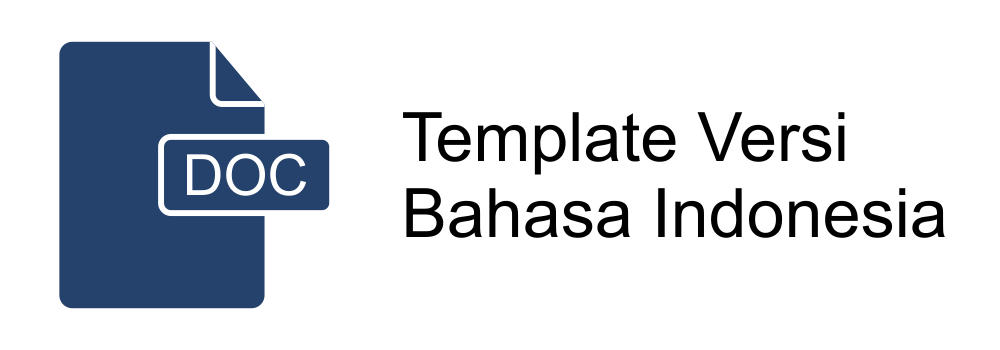Deep Learning: a Theoretical Review
Abstract
The term Deep Learning has become the current issue in educational field all around the globe. Deep learning is true learning, in the sense, that it is enduring, as opposed to shallow or surface learning that tends to be momentary. This term was proposed by Fullan et al. to refer to the process of acquiring the global competencies known as the 6Cs: character, citizenship, collaboration, communication, creativity, and critical thinking. These competencies are suitable to prepare students to be confident in encountering globalization challenges. Deep learning is designed based on a new pedagogical model, a learning partnership between and among students and teachers to master of content knowledge, create and use new knowledge in the real world. The focus of teaching is to develop students’ ability to manage their own learning and to do things with their learning. In Indonesian context, Deep Learning is implemented based on a framework consisting of four main components: learning framework, learning experience, learning principle, and graduate profile dimension framework. The learning experience framework includes three aspects: understanding, applying and reflecting. In practice, Deep learning is based on three main learning approaches mindful learning, meaningful learning, and joyful learning.
Keywords
Full Text:
PDFReferences
Ausubel, D. P. (1963). The psychology of meaningful verbal learning. Grune & Stratton.
Freire, P. (1998). Pedagogy of freedom. Rowman & Littlefield
Freire, P. (2004). Pedagogy of hope: Reliving pedagogy of the oppressed. New York: Continuum International Publishing Group.
Fullan, M. & Langworthy, M. (2014). A rich seam: How new pedagogies find deep learning. Pearson
Fullan, M., & Langworthy, M (2013). Towards a New End: New Pedagogies for Deep Learning, Seattle: Collaborative Impact. Retreieved from https://www.michaelfullan.ca/wp-content/uploads/2013/08/New-Pedagogies-for-Deep-Learning-An-Invitation-to-Partner-2013-6-201.pdf
Fullan, M., & Langworthy, M. (2014): A rich seam: How new pedagogies find deep learning. London: Pearson, pages 68-73. Retrieved from: http://www.michaelfullan.ca/wpcontent/uploads/2014/01/3897.Rich_Seam_web.pdf
Fullan, M., & Scott, G. (2014) New Pedagogies for Deep Learning Whitepaper: Education PLUS The world will be led by people you can count on, including you! Collaborative Impact SPC, Seattle, Washington https://docs.google.com/document/d/1lUJENKNvpwF7Ftw9bM4MqNsKp49Vj62gom6FZzQyO MI/edit?usp=sharing
Fullan, M., & Scott, G. (2014) New Pedagogies for Deep Learning Whitepaper: Education PLUS The world will be led by people you can count on, including you! Collaborative Impact SPC, Seattle, Washington https://docs.google.com/document/d/1lUJENKNvpwF7Ftw9bM4MqNsKp49Vj62gom6FZzQyO MI/edit?usp=sharing
Fullan, M., Hill, P., & Rincón-Gallardo, S. (2017). Deep Learning: Shaking the Foundation. Ontario, Canada: Fullan, M., Quinn, J., & McEachen, J. Retrieved from http://npdl.global/wp-content/uploads/2017/03/npdlcase_study_3.pdf
Fullan, M., Quinn, J. & McEachen, J. (2018). New pedagogies for deep learning: Leading transformation in schools, districts and systems. Thousand Oaks.
Gallup Poll (2016). Student Poll A Snapshot of Results and Findings. Retrieved from https://www.sac.edu/research/PublishingImages/Pages/research-studies/2016%20Gallup%20Student%20Poll%20Snapshot%20Report%20Final.pdf
Gibbs, P. (2017b). The Pedagogy of Compassion at the Heart of Higher Education (1 ed.). Springer International Publishing AG. https://doi.org/10.1007/978-3-319-57783-8
Goetz, J. L., Keltner, D., & Simon-Thomas, E. (2010). Compassion: An evolutionary analysis and empirical review. Psychological Bulletin, 136(3), 351–374. https://doi.org/10.1037/a0018807
Hao, R. N. (2011). Critical compassionate pedagogy and the teacher’s role in first-generation student success. New Directions for Teaching and Learning, 127, 91–98. https://doi.org/10.1002/tl.460
Jacobs, H.H., & Alcock, M. H. (2019). Bold Moves for Schools. Retrieved from http://www.ascd.org/publications/books/115013/chapters/Refreshed-Pedagogy-for-the- Contemporary-Learner.aspx
James W. Pellegrino and Margaret L. Hilton (2012). Education for Life and Work: Developing Transferable Knowledge and Skills in the 21st Century. Retrieved from http://pedverket.no/wp-content/uploads/2017/02/Pellegrino-Hilton-2012-NRC_Report_Executive_Su.
Laucella, L. E. (2019). Teaching the whole person through a pedagogy of compassion. Reinhardt University Center for Innovative Teaching and Engaged Learning. https://www.reinhardt.edu/wp-content/uploads/2020/02/Teaching-the-Whole-Person-with-a-Pedagogy-of-Compassion-RU-CITEL-White-Paper.pdf
McEachen, J., Fullan, M., & Quinn, J. Retrieved from: http://npdl.global/wp-content/uploads/2018/05/NPDL-Global-Report-2018.pdf 3. Fullan, M., & Langworthy, M. (2014): A rich seam: How new pedagogies find deep learning. London: Pearson, pages 68-73. Retrieved from: http://www.michaelfullan.ca/wpcontent/uploads/2014/01/3897.Rich_Seam_web.p
New Pedagogies for Deep Learning (2018). 2018 NPDL Global Report. Ontario, Canada: McEachen, J., Fullan, M., & Quinn, J. Retrieved from: http://npdl.global/wp-content/uploads/2018/05/NPDL-Global-Report-2018.pdf
Novak, J. (2002). Meaningful learning: the essential factor for conceptual change in limited or inappropriate propositional hierarchies leading to empowerment of learners, Science Education, 86(4): 548–571. https://doi.org/10.1002/sce.10032
PUSKUJAR (2025). Pembelajaran mendalam: Transformasi pembelajaran menuju pendidikan bermutu untuk semua. Retrieved from file:///C:/Users/User/Downloads/Final_030125-Paparan_Pembelajaran_Mendalam_pptx_(1).pdf
Richardson, W. (2012). Why School: How Education Must Change when Learning and Information are Every where. Ted Conferences.
Schacter, H. L., Brown, S. G., Daugherty, A. M., Brummelte, S., & Grekin, E. (2021, December 1). Creating a compassionate classroom. Inside Higher Ed. https://www.insidehighered.com/advice/2021/12/01/compassionate-teaching-yields-most-benefits-opinion
Smith, A., & Haakonssen, K. (2002). The theory of moral sentiments. Cambridge University Press. https://doi.org/10.1017/CBO9780511800153.005
Shuell, T. J. (1992), Adaptive Learning Environments, pp. 19–54. https://doi.org/10.1007/978-3-642-77512-3_3
Vandeyar, S., & Swart, R. (2016). Educational change: A case for a ‘pedagogy of compassion’. UNISA: Education as Change, 20(30), 141-159. https://doi.org/10.17159/1947-9417/2016/1362
DOI: https://doi.org/10.26499/surbet.v20i1.30777
Refbacks
- There are currently no refbacks.

This work is licensed under a Creative Commons Attribution-NonCommercial-ShareAlike 4.0 International License.
This work is licensed under a Creative Commons Attribution-NonCommercial-ShareAlike 4.0 International License.











